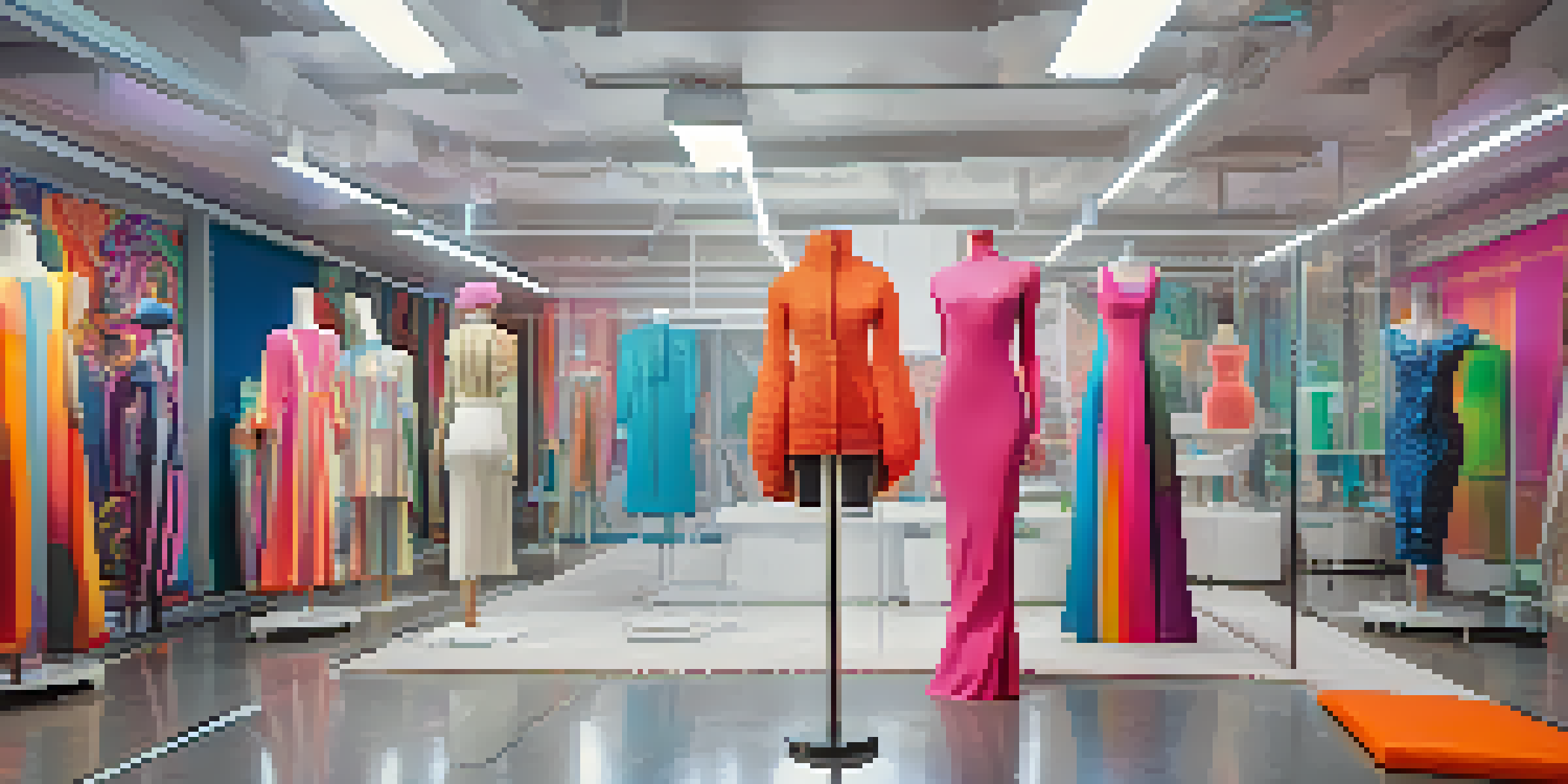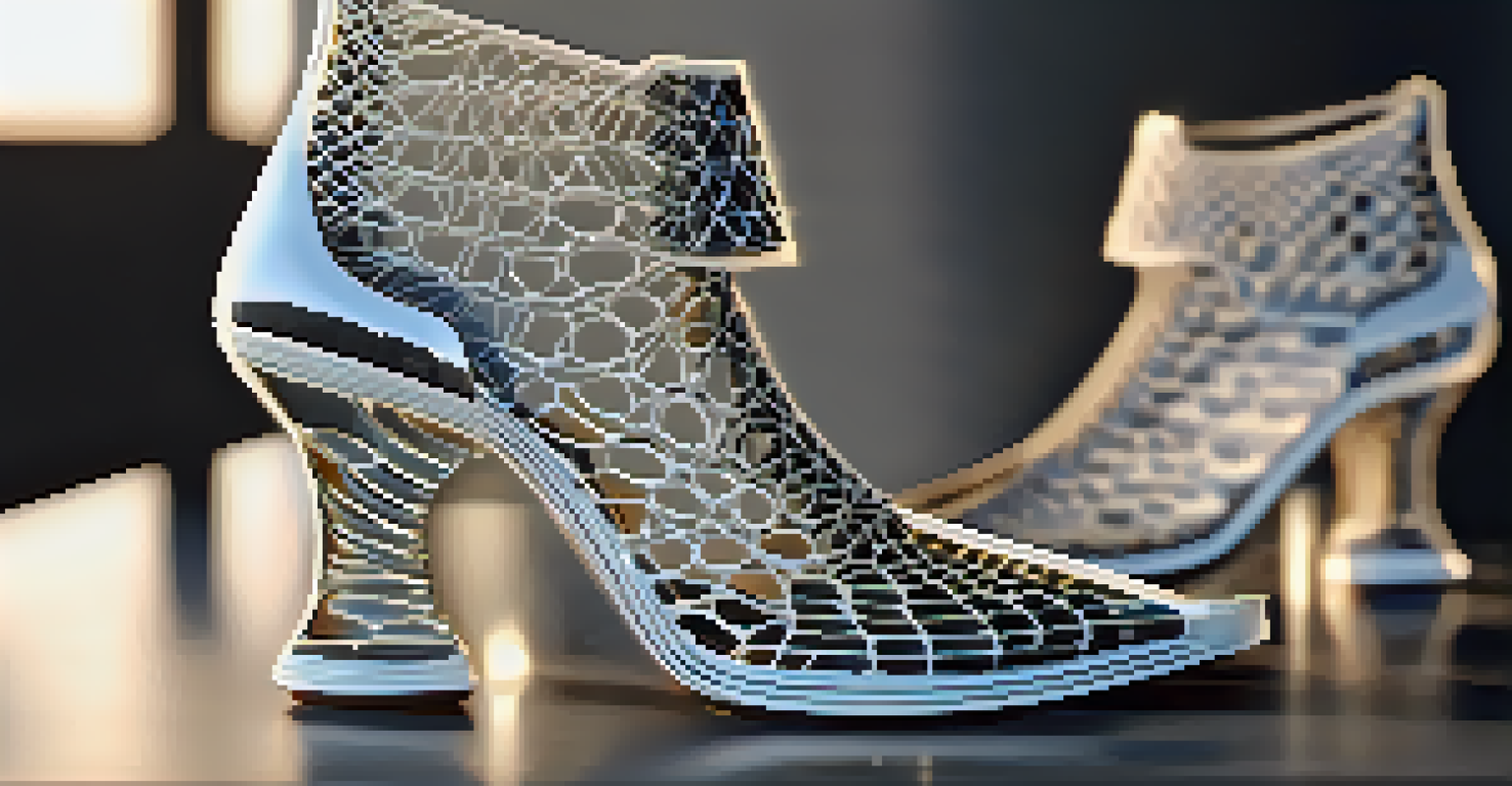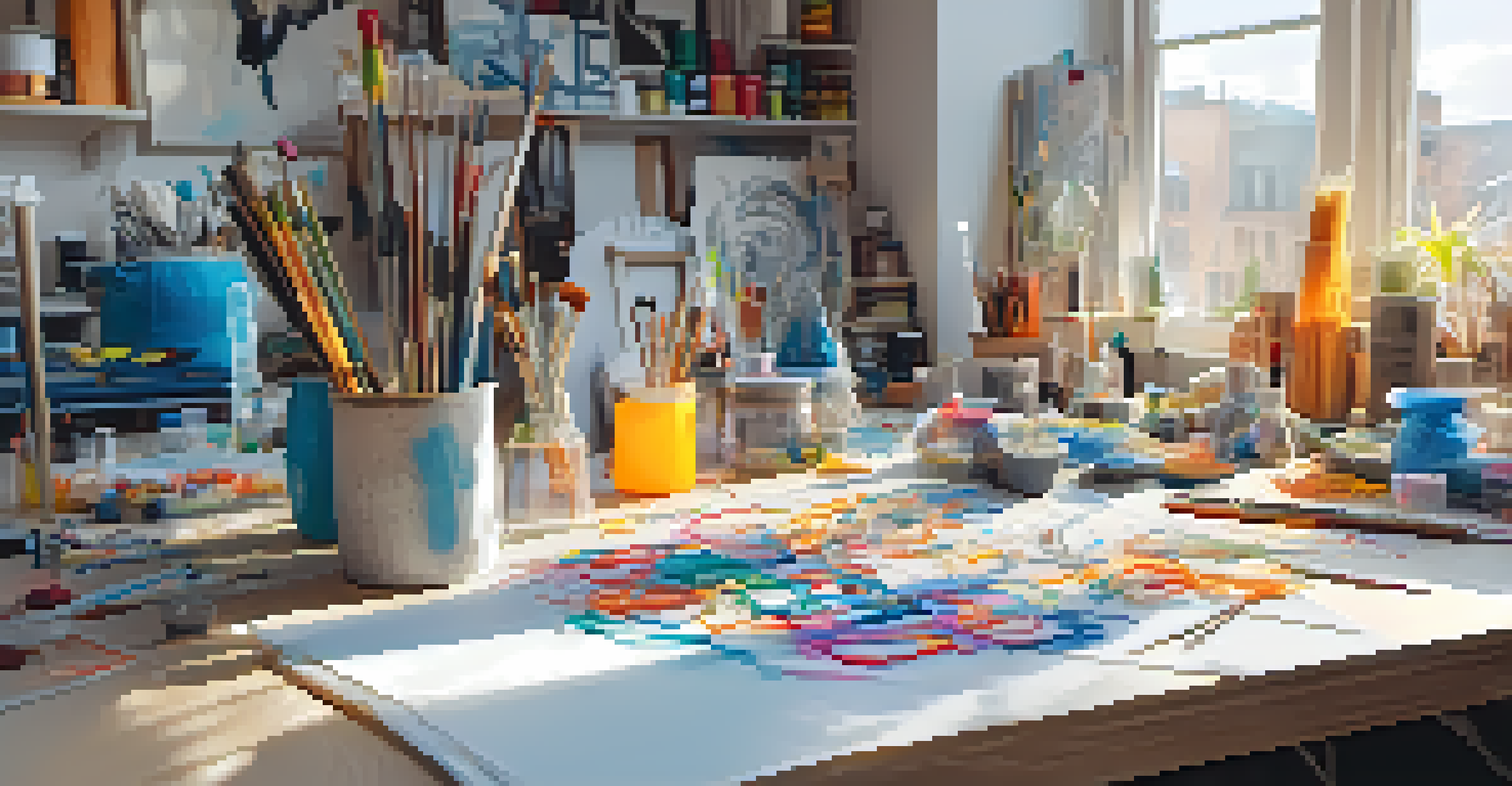3D Printing and Its Role in Personalized Fashion Creations

Understanding 3D Printing in Fashion Design
3D printing, or additive manufacturing, transforms digital designs into physical objects layer by layer. In fashion, this technology allows designers to create unique pieces tailored to individual preferences. By using computer-aided design (CAD) software, fashion creators can visualize their concepts before bringing them to life.
The fashion industry is facing a sustainability crisis, and 3D printing could be a game-changer in minimizing waste and promoting eco-friendly practices.
This technology is not just about creating garments; it encompasses accessories, footwear, and even intricate jewelry pieces. With 3D printing, the possibilities for customization are virtually limitless. For instance, a designer could print a pair of shoes that perfectly fit the contours of a customer's feet, ensuring unparalleled comfort.
Moreover, 3D printing reduces waste, as it uses only the material needed for production. This aligns with the growing demand for sustainable practices in the fashion industry. As consumers become more environmentally conscious, 3D printing offers a way to create personalized fashion without compromising the planet.
Benefits of Personalized Fashion with 3D Printing
One of the standout advantages of 3D printing in fashion is the ability to create customized designs. Imagine walking into a store and having clothes made just for you, reflecting your unique style and fit. Personalized fashion not only enhances individual expression but also boosts confidence, as pieces are tailored to your body.

Additionally, 3D printing allows for rapid prototyping. Designers can test and modify their creations in real time, leading to faster production cycles. This agility means fashion brands can respond quickly to trends and customer feedback, ensuring that the latest styles are always available.
3D Printing Enables Custom Fashion
3D printing allows designers to create personalized garments and accessories that perfectly fit individual preferences.
Moreover, the technology enables small brands and independent designers to compete with larger companies. With 3D printing, they can produce small runs of unique items without the hefty overhead costs associated with traditional manufacturing. This democratizes fashion, making it more accessible and diverse.
Sustainability in Fashion through 3D Printing
Sustainability is a growing concern in the fashion industry, and 3D printing offers a promising solution. Traditional clothing manufacturing often results in significant waste, with excess fabric and unsold inventory contributing to environmental issues. In contrast, 3D printing produces exactly what is needed, minimizing waste and promoting eco-friendly practices.
3D printing allows designers to create unique pieces tailored to individual preferences, revolutionizing the way we think about fashion.
Moreover, many 3D printing materials are recyclable, further enhancing the sustainability factor. Designers can use materials like biodegradable plastics, which decompose more easily than conventional fabrics. This shift not only benefits the environment but also appeals to consumers who prioritize eco-conscious choices.
Additionally, by using local 3D printing services, brands can reduce their carbon footprint associated with shipping and logistics. This localized approach supports community economies while fostering a more sustainable fashion ecosystem. As awareness of environmental impact grows, 3D printing stands out as a viable option for responsible fashion production.
The Process of Designing with 3D Printing
Designing for 3D printing involves several steps, starting with conceptualization. Designers sketch their ideas and create 3D models using specialized software. This initial phase is crucial, as it lays the foundation for the entire creation process, allowing for adjustments before any material is used.
Once the digital design is finalized, it is transferred to a 3D printer. The printer reads the model and begins building the item layer by layer. This process can vary in time depending on the complexity of the design but often results in rapid production compared to traditional methods.
Sustainable Practices with 3D Tech
This technology minimizes waste and promotes eco-friendly practices by producing only what is needed for fashion items.
After printing, the piece may require finishing touches, such as sanding or painting, to achieve the desired look. This attention to detail ensures that the final product meets both aesthetic and functional standards. The combination of technology and artistry in this process illustrates how 3D printing is shaping the future of fashion design.
Real-World Examples of 3D Printed Fashion
Several brands are pioneering the use of 3D printing in fashion, showcasing its potential. For instance, Nike has introduced 3D-printed sneakers that offer a customized fit tailored to individual athletes' needs. This innovation enhances performance while also providing a unique aesthetic.
Another notable example is the fashion designer Iris van Herpen, known for her avant-garde creations. She uses 3D printing to create intricate garments that blend technology and artistry, pushing the boundaries of traditional fashion. Her designs often feature complex patterns and textures that would be impossible to achieve with conventional methods.
These examples highlight how 3D printing is not just a trend but a transformative force in the fashion industry. By embracing this technology, brands can create unique, personalized pieces that captivate consumers and set new standards in design.
Challenges Facing 3D Printing in Fashion
While 3D printing offers exciting possibilities, it is not without challenges. One significant hurdle is the limited range of materials currently available for fashion applications. Although advancements are being made, many materials still lack the desired properties, such as flexibility and durability, needed for clothing and accessories.
Additionally, the costs associated with high-quality 3D printing can be prohibitive for some designers. Investing in advanced printers and materials can strain budgets, particularly for emerging brands. As a result, many designers may hesitate to adopt this technology despite its potential benefits.
Challenges in 3D Fashion Adoption
Despite its benefits, limited materials and high costs pose challenges for designers looking to adopt 3D printing in fashion.
Moreover, there is a learning curve associated with mastering the design software and 3D printing techniques. Designers must invest time and effort to become proficient, which can deter some from exploring this innovative approach. However, as technology evolves and becomes more accessible, these challenges may diminish, paving the way for broader adoption.
The Future of 3D Printing in Personalized Fashion
Looking ahead, the future of 3D printing in personalized fashion is bright. As technology continues to advance, we can expect to see an expanded range of materials and improved printing techniques. Innovations such as bioprinting and smart textiles may revolutionize the way we think about clothing and accessories.
Additionally, as consumer demand for personalized and sustainable fashion grows, brands will likely invest more in 3D printing capabilities. This shift could lead to a more diverse and inclusive fashion landscape where individual expression is at the forefront. Imagine a world where fashion is not just mass-produced but tailored to reflect each person's unique identity.

In conclusion, 3D printing is reshaping the future of fashion, making it more personalized, sustainable, and accessible. As designers and brands embrace this technology, we can anticipate a new era of creativity and innovation, where fashion truly becomes a reflection of the individual.